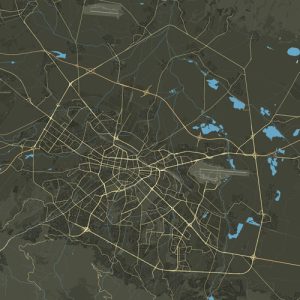Klisura is the “gateway” from the west to both the Pink and the Strem Valley, known since the time of Pliny the Elder, which, however, was marked on the map only at the end of the 18th century with the name “Gyopsa”. To us Bulgarians, the city is known especially with his heroic participation in the April Uprising. The feat of its inhabitants and the tragic events after its suppression inspired Vazov to describe in one of the best Bulgarian novels “Under the Yoke” the “drunkenness of a nation”.
The inhabitants of this city never they were not too wealthy and wealthy, although the harsh nature in which they live has gifted them with enormous capacity for work and enterprise. Driven by patriotic feelings, during the Renaissance they built several bridges and the beautiful church “St. Nicholas” on a donation basis. The cultural and educational life of Klisura was concentrated in it, as well as the main preparation for the uprising.
In the church, the apostle Panayot Volov consecrates the flag before leaving with his company to the positions of Zli dol. But the biggest donation was the construction of the “Memorial Monument-Museum” in memory of the people of April, for which funds were collected for 30 years and on May 2, 1926 it opened its doors. Today, it is in this building that the City Historical Museum is housed museum It houses documents and paintings that recreate the heroic and tragic episodes of the days of the April Uprising.
A visit to Kozinar’s House is particularly exciting. In his Notes on the Bulgarian Uprisings, Zahari Stoyanov poignantly describes the last moments of the owner of this house, who, on the day of the suppression of the April Uprising, threw herself and her four children into the well in the yard to avoid being insulted by the Turks.
The apogee of the town’s development was towards the end of the 18th century, when its population numbered about 9,000 people living in 1,200 houses. The main livelihood for the majority of the people is mainly cattle breeding and, of course, farming. The production of the skilled craftsmen of Klisuri – rugs, rugs and rugs, was well known not only in the markets throughout the Turkish Empire, but reached Asia Minor and even Europe.
By the second half of the 19th century, however, abadge declined because local products could not withstand the competition of cheaper and more luxurious European factory fabrics. On the other hand, rose production flourished, hundreds of acres were sown with the fragrant flower. In Klisura, 140 pounds (about 70 kilograms) of rose oil began to be extracted annually – a quarter of the total amount in Bulgaria. We will recall another telling and little-known fact.
After the Liberation, the people of Klisur considered it unworthy to accept a material reward for their historical merits, and at a town-wide meeting they decided to refuse the pensions offered to them. Because they fought not for themselves, but for the fatherland. What more eloquent and dignified gesture than this!
Work time:
Monday to Friday: 8:00 am – 12:00 pm : 1:00 pm to 5:00 pm
Saturday and Sunday: 9:00 am – 12:00 pm and 1:00 pm – 5:00 pm
Entrance fees:
Adults – BGN 2
Students – BGN 1
Contacts:
Historical Museum
Address: Klisura, “20 April” square
Tel: +359 3137 20 04

